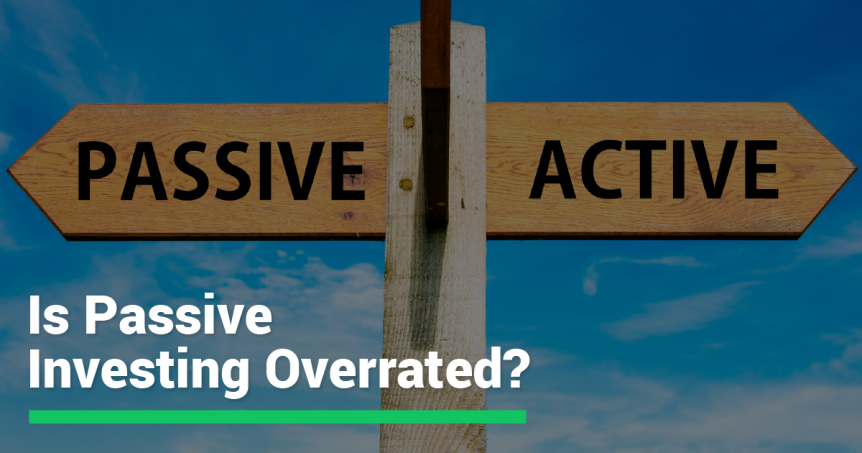Billionaire investor Warren Buffet is a staunch advocate for passive investments. In January of 2008, he challenged any hedge fund to beat the S&P 500 index over a ten-year period, while factoring in fees, costs and expenses. Protege Partners LLC accepted the challenge and placed a $1 million bet on January 1, 2008, but ultimately, it conceded defeat on December 31, 2017.
Only three of the world’s top 25 mutual funds are still actively managed, according to Morningstar data, and passively managed index funds are poised to overtake active management in the United States by 2021 by Moody’s Investors Service’s estimates. Vanguard, Blackrock and other issuers have put downward pressure on fees and shaken the competition.
Passive index funds may be in vogue these days, but that doesn’t mean there’s no longer a need for active strategies. There are many instances where active strategies can help investors isolate risk or returns to better meet their investment objectives than one-size-fits-all passive strategies that leverage predefined indexes for the masses.
Let’s take a look at these instances where passive investments may be overrated and how you can leverage active strategies to meet your investment goals.
Is Passive Investing Overrated?
Most investors look at historical returns when comparing investments. Over the long-term, passively managed index funds tend to outperform their actively managed counterparts after factoring in fees and other expenses — but that doesn’t mean that every actively managed fund underperforms. In fact, Warren Buffett’s Berkshire Hathaway is one notable exception!
Another exception is the Fidelity Contrafund, which has outperformed its closest passively managed counterpart, the Fidelity 500 Index Fund, over many years. Despite its superior performance, the Fidelity Contrafund has seen net capital outflows while the Fidelity 500 Index Fund has seen significant net capital inflows, as investors continue to favor passive funds.
Performance Comparison – Source: Bloomberg
In addition to historical returns, it’s important for investors to look at risk — and in particular, how investments match their risk tolerance. Passively managed index funds may outperform some of their actively managed counterparts, but not necessarily on a risk-adjusted basis. It’s important to consider both returns and risks when evaluating active versus passive investments.
When Active Investing Makes Sense
There are many instances where active strategies might make more sense than passive strategies. In fact, there are some cases where active strategies may be the only option that helps an investor meet a certain investment objective due to inherent limitations in what types of assets can be passively indexed (e.g. companies that are not public or alternative assets).
Some common examples of instances where active investing might make sense include:
- Generating Income – Investors looking to generate an income from their portfolios may be better off using active strategies designed to maximize income rather than passive strategies that simply index income-producing assets.
- Low Volatility – Investors looking to reduce their portfolio’s volatility may want to consider actively managed funds that reduce volatility rather than passively managed funds that may not offer control over volatility.
- Alternative Assets – Investors looking for exposure to alternative assets, such as pre-public startups, may need actively managed funds to gain access since passively managed indexes don’t typically include them.
- Illiquid Markets – Investors looking to invest in illiquid or fragmented markets, such as municipal bonds or high-yield corporate bonds, may want to consider hiring the expertise of an active manager to select the best investments.
- Value Investing – Value investors may want to consider active strategies to better capitalize on individual opportunities rather than using passive management techniques that rely on a purely quantitative approach to stock picking.
There’s also an argument that the growing penchant for passive investing is disrupting valuations. Since many passive index funds are weighted by market capitalization, the move into passive index funds puts upward pressure on the valuation of large-cap companies relative to small-cap companies — creating an opportunity for active strategies to fill the gap.
Writing Covered Calls for Income
Many investors approaching retirement want to generate income from their portfolio to cover their daily living expenses. While there are passively managed index funds that generate income, such as bond-heavy indexes, these funds may not provide an optimal amount of income or have other characteristics that an investor may find undesirable for their situation.
Covered calls are a great way to generate income from a portfolio without resorting to fixed-income investments. By writing call options against stock positions in your portfolio, you can collect premium payments and generate an income above and beyond dividend income. You can also maintain a portfolio of high-quality stocks rather than bonds or other fixed income.
The Snider Investment Method provides a methodical way to select stocks and choose the optimal strike prices for covered call strategies. Using the Lattco platform, you can easily screen for covered call opportunities, automate the execution of trades and ensure that your portfolio is both diversified and optimized for a regular income.
Download our FREE eBook, The Ultimate Guide to Writing Covered Calls, to learn more about covered call strategies and how they can boost portfolio income.
The Bottom Line
Passive investing has become increasingly popular over the past decade — and for a good reason! Indexed funds tend to outperform their active counterparts over the long run due to their lower fees. The catch is that there are some instances where active strategies might be superior — especially when optimizing for risk or fine-tuning a strategy for your specific situation.
Investors should always take both historical returns and risk into account when comparing active and passive strategies and select the best option for their specific investment goals. While passively managed index funds are great in many instances, there are some unique instances when active strategies might be a better fit.
If you’re interested in using covered calls as an active strategy to generate an income, sign up for our free e-courses or explore our asset management options.







